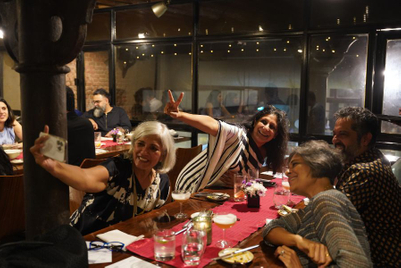
The post-pandemic landscape has reshaped hiring across industries at large. While employees discovered the merits of remote working, companies realised that tapping into a pool of freelancers is economically viable.
This trend has also caught the eye of advertising agencies. A few that Campaign spoke with are evaluating how the onboarding contractual workers can benefit their dynamic business operations. These workers are engaged for specific projects but without the traditional long-term commitment. So, what does this shift mean for the industry?
To begin, it's essential to distinguish between gig workers and contractual workers, since the two terms are often used synonymously. HR experts are quick to point out that this is erroneous and can lead to unnecessary confusion, while assigning job roles.
While both offer temporary services, gig workers often take on short-term, ad-hoc assignments—think ride-sharing drivers or food delivery agents. Contractual workers, however, tend to be engaged for specific, long-term projects requiring particular expertise. These roles demand more involvement and responsibility, often resembling traditional employment but without permanent benefits.
Demand for expertise: Why contractual workers?
The advertising sector has seen a surge in demand for digital marketing, social media management, and content creation skills in the past few years. These roles lend themselves well to short-term, project-based work, making them ideal for contractual hires.
As Yasin Hamidani, director of Media Care Brand Solution, explained, “Since 2020, we have hired approximately 10-12 freelancers working on a project-to-project basis across different departments.” Among the most sought-after positions for contractual workers are content writers, graphic designers, and social media executives.
Specialised roles gaining traction
Nupoor Pradhan, head of people’s operations at SoCheers, highlighted the growing reliance on freelancers for specific, high-demand projects. “In the last year, we hired a freelance copywriter for regional content, a video editor, and two freelancers for 3D modelling and CGI videos,” she revealed. She added that these hires were usually made on a need basis, for instance when the company was working on projects that required regional language expertise.

For agencies, it often makes more sense to hire contractual workers for such specialised roles, especially when the work is sporadic, rather than maintaining full-time staff. This project-based engagement aligns with the globalisation of advertising.
Agencies increasingly undertake international assignments, outsourcing parts of the work to contractual workers. Cost efficiency is a significant factor here, enabling agencies to deliver high-quality services at competitive prices.
The cost factor: Benefits versus budgeting
One of the key reasons ad agencies lean towards contractual workers is cost. Hiring full-time employees can be expensive, with entry-level positions costing agencies between INR 3 lakh to INR 6 lakh annually. This includes benefits such as healthcare, provident fund, and other allowances.
Contractual workers, on the other hand, charge either a project-based or hourly rate. For example, a freelance content writer might charge between INR 15,000 and INR 30,000 per month, depending on the scope of the work.
Hamidani elaborated on the financial implications on such engagements. "Freelancers save companies overhead costs, as they only pay for the work done, without long-term financial commitments like benefits and office resources."

Senior-level consultants, such as those with over 10 years of experience, however, come with a pricier tag. They can earn anywhere from INR 75,000 to INR 2 lakh per month, depending on the project or brand.
However, Yousuf Rangoonwala, founder of Kakkoii Entertainment, stated, “Consultants usually do not provide the long-term stability or capital contributions often expected in such roles, and their work is typically project-based with a defined timeline.”
Often times, these executives are leveraged when a vacuum is created after a key professionals exit the company. They are tasked with holding the fort and keeping the lights on, till a replacement is found, following which either they are absorbed into the workplace or are retained in an advisory role.
The drawbacks: Instability and saturation
While the flexibility of contractual work benefits agencies, it poses challenges for workers. Freelancers face economic uncertainty, lack of job security, and increased competition. New entrants to the market often offer services at lower rates, driving prices down and increasing the pressure on more experienced professionals to upskill continuously.
“The gig economy’s future will depend on how well both companies and workers can navigate these shifts, balancing cost-efficiency with the need for top-level talent,” Hamidani suggested.
The freelance platforms market in India was valued at $187.5 million in 2023 and is projected to grow at a compound annual growth rate (CAGR) of 22.5% through 2030, according to a report by Grand View Research. The marketing and advertising sectors are at the forefront of this growth, with demand particularly high for digital marketing, content development, and web design.
However, while the future for contractual workers looks promising, financial instability, lack of employee benefits, and market saturation may hinder some freelancers' long-term prospects. As businesses become more discerning, only those with advanced skills and industry experience will thrive in this evolving landscape.
The shift towards contractual work in advertising is not without its challenges, but for agencies looking to balance cost and creativity, it’s a trend that’s likely here to stay.



.jpg&h=268&w=401&q=100&v=20250320&c=1)

.jpg&h=268&w=401&q=100&v=20250320&c=1)


.jpg&h=268&w=401&q=100&v=20250320&c=1)
.jpg&h=268&w=401&q=100&v=20250320&c=1)
